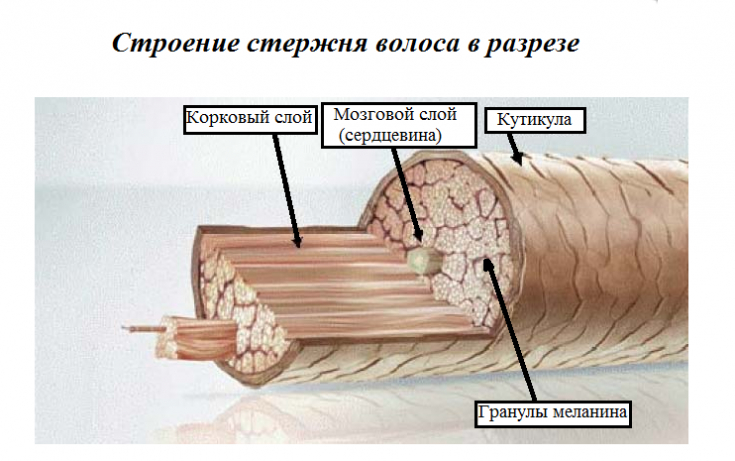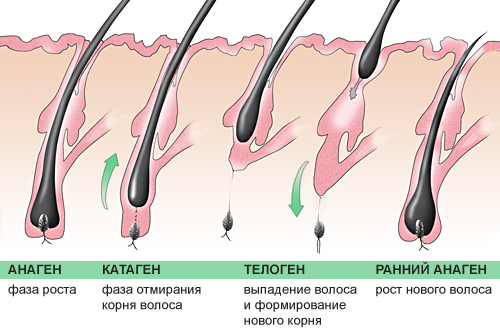Hair Loss − common problem for both men and women. It causes emotional stress and lower self-esteem in affected individuals.
Although the vast majority of hair loss is due to genetic predisposition, a number of other factors can speed up the process: surgery hormonal changes, in particular, hyper- or hypofunction of the thyroid gland; certain drugs and infectious agents. The set of effective remedies that can prevent this pathology and induce new hair growth is still limited.
Only in the article on estet-portal.com find out about the most promising methods of hair loss treatment.
Regulation of hair loss
There are three phases of hair growth: growth (anagen), regression (catagen) and rest (telogen). Transitions between stages are controlled by changes in the local signaling system based on changes in the expression or activity of various cytokines, hormones, neurotransmitters, transcription factors, and enzymes that trigger the hair follicle cycle.
Follow us on Instagram!
These control factors are of significant clinical interest because hair loss is a common symptom of diseases such as male and female pattern alopecia and a consequence of certain treatments (eg, radiotherapy and chemotherapy). Although it is reliably known that the hair follicle − the main checkpoint of the cycle, the true molecular mechanisms of its formation remain unclear. It is also unknown which signaling molecules trigger follicle formation or hair loss.
Methods for diagnosing androgenetic alopecia
Nanotechnology and hair loss
A team of American scientists reported that fullerene derivatives obtained through nanotechnology can accelerate hair growth and induce new hair follicles in the dermis of mice with a genetically determined decrease in their number and hair loss.
Thus, these compounds could be a new way to treat hair loss.
Fullerenes − it is an allotropic modification of carbon, which was one of the first in the field of nanotechnology research. They were opened in 1985. After their discovery, Robert Curley, Harold Kroto and Richard Smalley were awarded the Nobel Prize in Chemistry in 1996. The researchers studied the mass spectra of graphite vapor produced under the impact of a laser beam and found that there are two signals in the spectra.

As a result, the structure of a polyhedron assembled from pentagons and hexagons was proposed. Carbon atoms obtained by nanotechnology can combine atoms of different chemical structures, forming a wide class of chemical compounds, while they acquire unique physical and chemical properties.
Other representatives of nanotechnology in the treatment of hair loss
As with minoxidil and finasteride − drugs against hair loss, recognized by the US Food and Drug Administration (FDA), the mechanism of induction of hair growth by fullerenes remains unclear. In animal studies, minoxidil shortens the telogen phase by causing dormant hair follicles to enter the anagen phase prematurely, lengthening this phase, increasing the size of the hair follicles and preventing hair loss.
T cells: hair growth activators
Finasteride − it is an androgen antagonist, inhibits human 5α-reductase type II and inhibits the formation of dihydrotestosterone from testosterone. However, neither minoxidil nor finasteride has a significant effect on the number of hair follicles in both experimental mice with hair loss and in human scalp biopsies.
At the same time, fullerenes significantly increase the number of hair follicles in the skin.
One of the main aging factors that also affects human hair is oxidative stress, which causes the production of reactive oxygen species (ROS).

The constant synthesis of melanin in the growth (anagen) phase causes high oxidative stress, which leads to selective premature aging and apoptosis of the follicles, a direct correlation between hair loss and oxidative stress has been noted. The fullerene core is capable of reacting with free radicals due to its ability to absorb electrons and scatter them through 20 benzene rings distributed by the surface of the fullerene molecule.
Genes and hair loss
The discoveries of the genes that are responsible for hair loss are important. Thus, when studying hair loss in the population, a deletion of − loss of a chromosome segment (985 nucleotides of the LIPH gene) responsible for the differentiation of stem cells in hair follicles.
Human stem cells for hair regeneration
The mutation renders him incapacitated. In turn, a group of scientists from the National Institute of Genetics (Tokyo, Japan) showed that blockade of the Sox21 gene in mice leads to hair loss on the 15th day of birth, and a week later – total hair loss. Influencing these genes with genetic engineering methods can be an effective means of combating hair loss, especially when it starts at a young age.
Thus, gene therapy and nanotechnology can become a powerful weapon in the fight against hair loss.







Add a comment